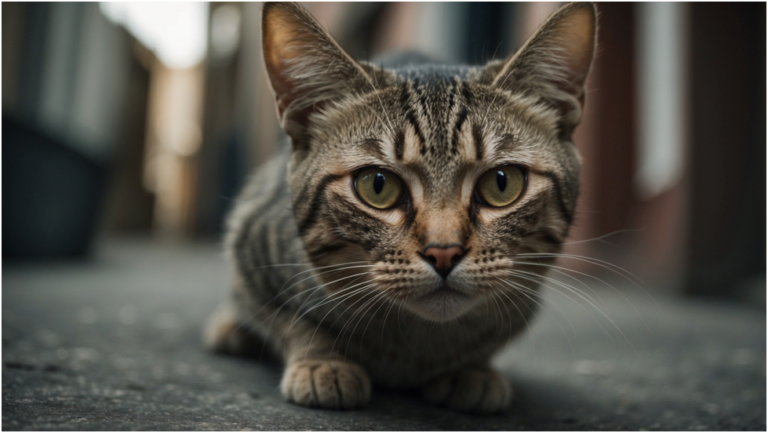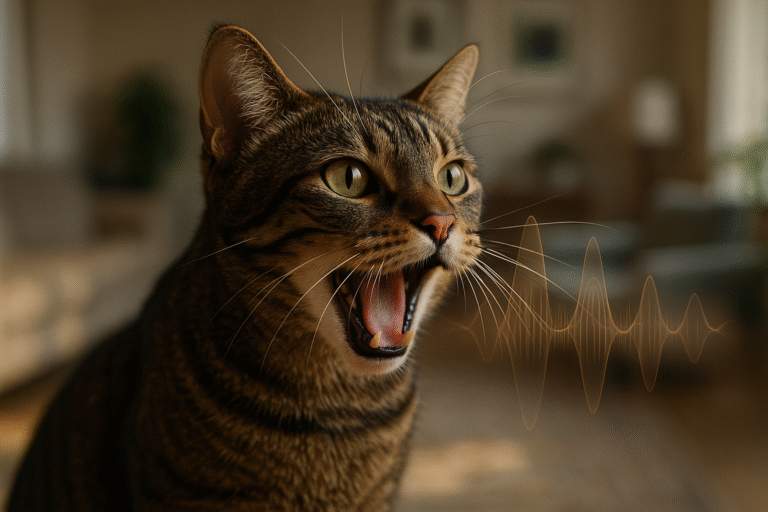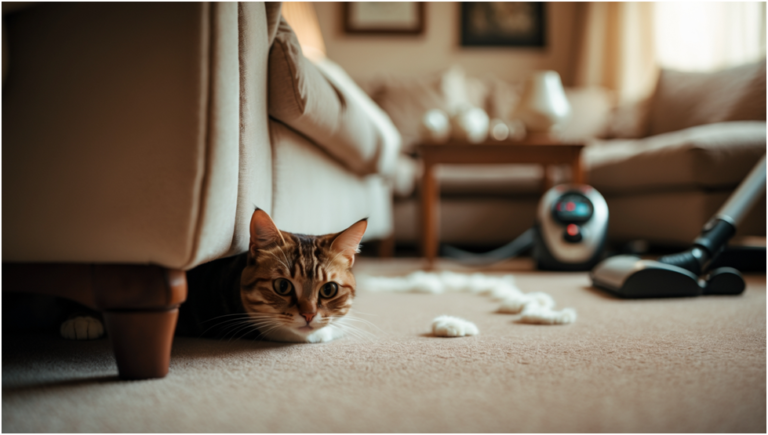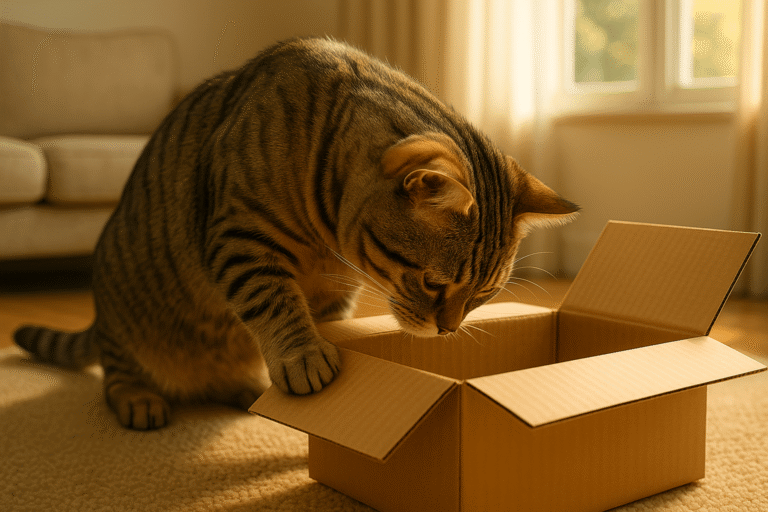How Do You Know Your Cat Is Stressed? A Comprehensive Guide for Cat Owners
The well-being of your furry friends determines how you know your cat is stressed and takes a look at the needs of a cat. Generally, cats tend to be cornered to be peaceful, but they equally deal with stress, just like a human. With that in mind, here are some practical tips I have put together for pet owners so that the pet can settle down and not furiously fight its owners.
Stress responses can take a quiet nature, and oftentimes, a furry friend can go through it without being noticed, which could lead to negative health implications in the long run. It is essential to understand and guarantee health is maintained, which fundamentally comes down to sustaining medical measures.
Recognizing signs of cat stress
In Cats Some of the anxiety signs in cats may include knocking over objects or furniture and scratching at them. Such signs commonly mean that there is more serious anxiety that needs to be addressed.
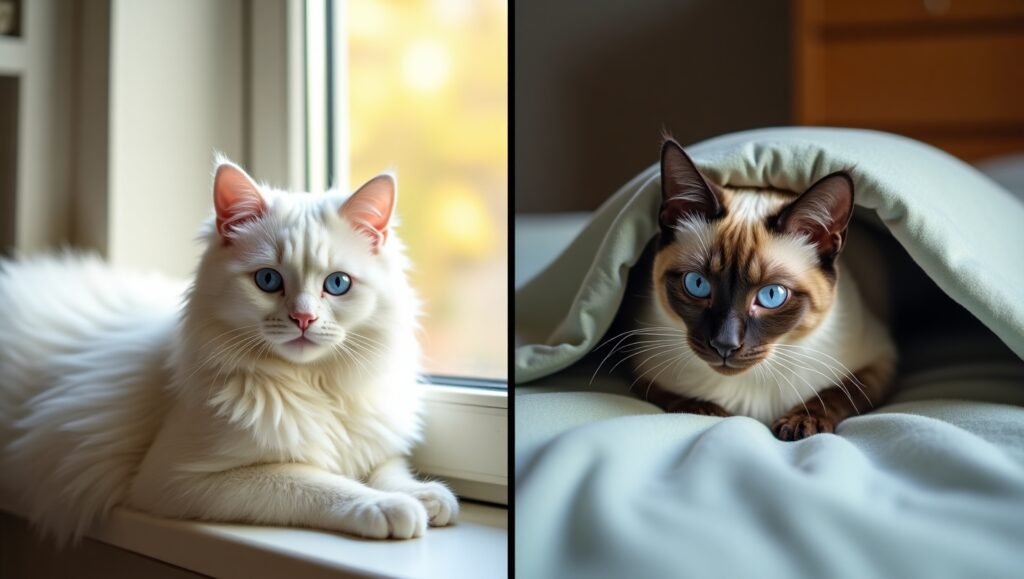
Split image comparing a relaxed cat by the window and a stressed cat hiding under a blanket, demonstrating the visual differences between calm and anxious feline behavior.
Behavioral Signs of Stress
Stressed cats display certain behavior patterns when facing an unfamiliar environment or situation, such as roaming around the house or too much vocalization. These cues indicate they are uncomfortable and need reassurance.
- Hiding or Isolation: Cats tend to behave in an outgoing manner. But all of a sudden, a cat prefers to hide under the bed or in hard-to-reach places.
- Aggression: Stressed and tensed cats sometimes resort to hissing, scratching, or biting themselves or even the owners. Stress causes aggressive behavior, like swatting and hissing, to show discomfort or anxiety.
- Over-grooming: Have you wondered why your cat is over-grooming? A stressed cat lick themselves forbiddingly resulting in partial bald patches. It’s a way of coping with their anxiety.
- Litter Box Avoidance: They begin defecating or urinating outside of their litter box due to high stress.
- Excessive Vocalization: Higher levels of distress can make cats meow and yowl more than usual.
Physical Changes on Stress
Stress in cats often gets expressed in the form of behavioral changes. Some of the common symptoms include the following:
- Digestion Problems: Have you seen any vomiting or possibly diarrhea? Yes, emotional stress does trigger diarrhea in cats.
- Increased Amount of Lost Fur: Cats do lose fur with a certain frequency, but now and then, inexperienced or more anxious cats do tend to lose them more than normal. Do cats shed when stressed? Of course, it is a normal occurrence.
- Unbearable Fatigue: Are you worried about why your cat is suddenly lethargic. The answer is unbearable fatigue. Unbearably Fatigue- If your Cat is normally active but has started to see a little bit too much of the world’s mop, they may be beginning to engage with too much stress, and it has begun to suck the life out of them. If you know, ‘Why is there a sudden change in my cat’s behavior to the slightly active feline? The answer is simple. Stress.

“Infographic showing cat stress symptoms: over-grooming a bald patch, litter box issues with waste outside the box, cat with dilated pupils and crouched posture, and tufts of fur.
What does a stressful cat look like?
An anxious cat usually displays a combination of behavioral and physical signs. You’ve wondered why are your cat’s eyes always dilated? It’s a clear indication that your cat is stressed. Other signs like left ears can be lowered down, the tail can be shaking, and even the head position can be in a crouching position. These are commonly known key stressed cat body language. If you have ever asked yourself, ‘Why are my cat’s pupils always enlarged?’ this gives a clue because enclosing means there is a high level of anxiety. It’s really important to monitor these changes as they show changes in emotion, which is quite sensitive.
Cats and the Separation Anxiety Phenomenon
The separation anxiety of cats is particularly worrisome. Still, dogs face it, too. Separation anxiety is a condition that’s commonly seen when a cat gets stressed over a specific event, which accounts for 10-20% of the referrals vet behaviorists receive. The various signs of indecent distress are known to cause acute stress in cats. A few signs of separation anxiety include:
- Cries such as prolonged meowing and high-pitched whining while the owner is away.
- Destructs furniture by scratching or even sometimes knocking them down.
- Suffers from lack of appetite while the owner is absent.
- Deletes the absence of the owner through excessive grooming or other behavioral tasks.
If you have a cat who never stops crying when left alone, consider providing them interactive toys or turning on your favorite cat videos when going to work.
Why Do Certain Cats Have A Higher Risk of Long-Term Stress Issues?
Different cats manage stress differently. Some are more susceptible to chronic stress because of the environment they grew up in or administrative factors. Kittens who lack socialization during their early development face problems later in life. Moreover, Siamese and Bengal types are more likely to suffer from chronic stress due to their higher emotional needs. Additionally, disruptive environments or multi-cat households can fuel anxiety, jealousy and territorial competition, which can worsen these issues.
Causes of Stress in Cats

Multiple cats and a dog in a living room with a vacuum cleaner and moving van outside, showing common causes of cat stress such as new pets, loud noises, and environmental changes.
Changes In Environment
Changes in the environment are bound to have a certain effect on cats. Living with other pets or even new people can be a social stressors that severely undermine a cat’s health. Slight changes like shifting of furniture can be sources of stress. Clear changes like moving to a new house can cause the cat to hide, become aggressive and lose their appetite. Studies indicate that cats need stable environments, so having unchanged surroundings and slow exposure to new elements can help.
Territorial Disputes
Territory instinct may be observed when adding new pets to the family or in multi-cat households. Studies show that more than sixty percent of territorial cats have stress responses marked by aggression or marking. Resource guarding, like competition for litter trays, water bowls and food bowls, is a frequent phenomenon as well. These conflicts can be avoided by providing each cat with separate resources and introducing new pets gradually. Spaying or neutering cats is also a good way to significantly lower territorial tension. Do cats feel jealous of other cats? Yes, especially when they have to share resources.
Social Stress
Loud noises, house guests or other new family members, and overcrowding of the house can result in excessive hiding, over-grooming, or self-mutilation. Studies have also shown that increased vocalization or scratching behavior in stressed cats is increased by 45%. These are some steps that can be taken to help reduce social stress: quiet zones, calming diffusers, and places where the cat can escape and hide.
Medical Issues
Physical health issues like urinary tract infections or arthritis often manifest as behavior alterations such as inappropriate elimination or oversleeping. Such cat stress may worsen some conditions like Feline Lower Urinary Tract Disease (FLUTD), which is diagnosed in 1.5% of cats every year.
Post-traumatic stress disorder (PTSD) in cats develops from traumatic events like abuse. In abused cats, symptoms include hyper-vigilance and traumatic avoidance. If you notice your cat being lethargic for no apparent reason or not using the litter box, it might be a good idea to see a vet.
How to help reduce the level of stress exhibited by your cat while at home?
Understanding the factors that lead to stress in your cat provides a good starting point for lowering your cat’s stress levels. Like all other creatures, cats also require some degree of safety and predictability. Due to their timid nature, cats are quite sensitive to some changes in their surroundings, such as their schedule or routine. Adopting stress management techniques, keeping cats in places where the cats can feel safe and engaging the cat in more play can greatly improve the cat’s living conditions.
Provide Safe Spaces
Make sure there’s an escape where cats can go when placed in overwhelming situations. Use environmental enrichment items like scratching posts, soft blankets or beds, quiet corners and even elevated perches or a cat tree to create a relaxing and undisturbed environment.
Introduce Calming Products
Cats who show extreme levels of anxious behavior can be managed by using pheromone diffusers such as Feliway. These diffusers help reduce stress-related actions by mimicking calming natural scents. Dietary supplements and calming toys can also help cats soothe in rough environments.
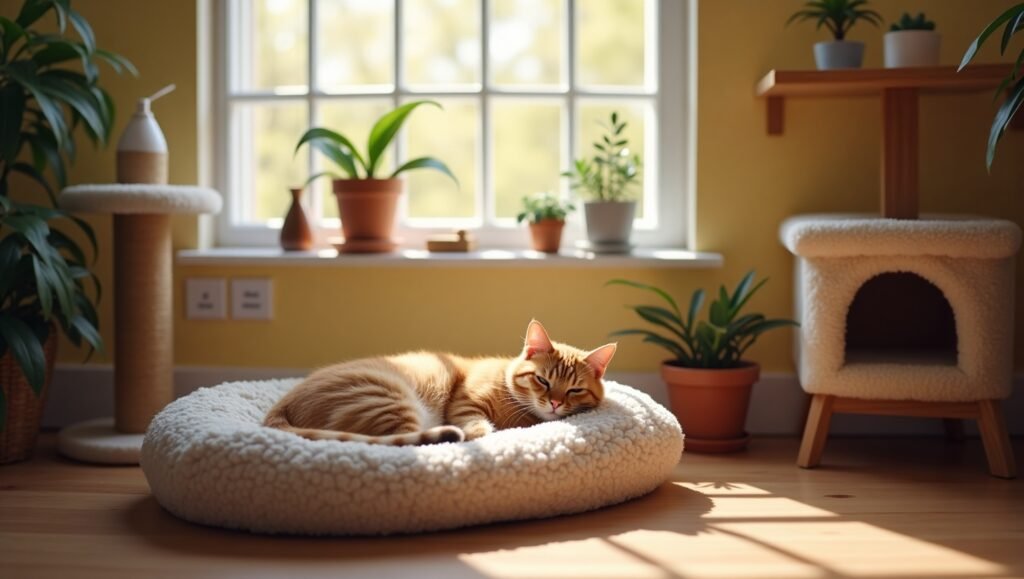
Content orange tabby cat sleeping peacefully in a cozy bed by a sunny window, surrounded by indoor plants and cat furniture, illustrating a calm and stress-free environment for cats.
Strengthen Your Bond Through Play
Playtime with a cat using toys such as feather wands or laser pointers not only strengthens the bond but also relieves stress. If you’re wondering how to tell a cat you love them, playful and positive interactions are a good way to strengthen the bond.
Follow a Routine
In a cat’s life, the key to a stress-free lifestyle is consistency. Maintain a constant routine with set specific times for feeding, playing and resting. Predictable routines give a sense of stability to a cat and help soothe anxiety.
When to have your cat examined by a Vet
You will want to make an appointment with a vet as soon as you start noticing your lovely kitty struggling with stress. For instance, some cats get very stressed and overgroom themselves. At the same time, others may experience aggressive behavior or even begin to change their eating and litter habits. A qualified vet can help pinpoint some other causes for stress that may be hidden, like hyperthyroidism or dental pain. Additionally, make sure you talk to your vet to make a plan as to how the pet is finally going to feel happier. It is always better to attend to stress in a pet as soon as possible because, in some cases, it can develop into serious psychological or health-related issues.
Moreover, how do Vets figure out what may be causing anxiety in your feline friend?
There is a lot that goes into analyzing cat anxiety and that’s why vets have the hardest job of trying to understand your cat’s behavioral patterns whilst trying to figure out each sign of stress and stress triggers. Some other factors they may focus on are the overall general environment, changes in normal routine or severe stress triggers. After analyzing all of the behavioral patterns and underlying issues together, they may be able to understand what may be causing anxiety in your cat and try to relieve the stress of the kitty.
Strategies for Your Cat to Build a More Tranquil Tomorrow
Your cat will be more healthy and happy with every step you take to lower stress. You should be able to recognize a stressed cat’s body language or other sudden behavioral changes so you can take action. To put it simply, you have to know when the cat is stressed.
Most of this stress reduction is quite basic, such as the creation of a safe zone for the pet or lessening their separation anxiety. If pet owners can make changes in their pets’ stress management, then they should be able to take coping measures prior to the competition to make the pet’s life pleasant. Providing a cat when it is placed in stressful situations assists in reinforcing a cat’s response, and this may entail the provision of cover places and participation in some exciting activities. Little by little, you get to earn the trust and the joy of your cat.
Faqs
1. What is causing my cat’s stress and how can I manage it?
Stress in cats can be triggered by subtle scents, ultrasonic noises, or even changes in your mood. To manage it, use interactive feeders, provide vertical territory, and introduce scent-swapping with familiar objects to increase comfort. Regularly rotate toys and maintain a calm, predictable environment.
2. Why are some cats more prone to developing chronic stress than others?
Genetics, early weaning, and prenatal stress (stress experienced by the mother during pregnancy) can make some cats more vulnerable. Cats with less exposure to positive experiences during their critical socialization period (2-7 weeks old) are also at higher risk for chronic stress.
3. What happens if my cat is stressed for a long time?
Chronic stress can suppress your cat’s immune system, leading to frequent infections, worsen conditions like diabetes, and even cause cognitive decline. Long-term stress may also trigger compulsive behaviors, such as fur-plucking or self-mutilation, which are difficult to reverse.
4. What should I do if my cat is stressed?
Immediately reduce sensory overload-dim lights, lower noise, and limit handling. Offer a warm, enclosed space and use a pheromone diffuser. Avoid punishment; instead, reward calm behavior. If stress persists, consult a feline behaviorist for specialized intervention.
5. How do I know if my cat is nervous or afraid?
Nervous cats often display subtle signs like tail-twitching, lip-licking, or freezing in place. Fearful cats may crouch low, flatten their ears, or exhibit rapid, shallow breathing. Watch for sudden, exaggerated startle responses or attempts to escape when approached.
6. How can you reduce your cat’s stress at home?
Create a multi-level environment with shelves and hideaways. Use puzzle feeders to engage their minds. Play classical music or white noise to mask stressful sounds. Rotate scents using cat-safe herbs like valerian or silver vine to provide novelty and enrichment.
7. How do I get my stressed cat to eat?
Offer highly palatable, aromatic foods (like warmed wet food or tuna water). Feed in a quiet, familiar spot and try hand-feeding to build trust. If appetite loss persists, ask your vet about appetite stimulants or anti-nausea medication to prevent hepatic lipidosis.


